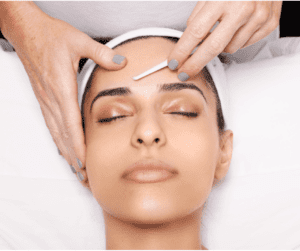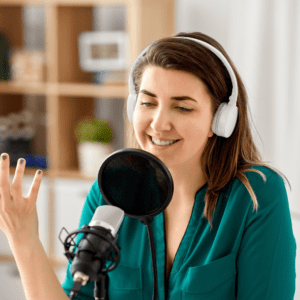Every Facebook agency should have a process for testing - This is ours.
Running Facebook ads is a bit of an art and a bit of a science. And what is science all about? Experiments and tests! If you want to get great results with Facebook ads, you need to get into the mindset of an advertising agency and experiment and test to optimise your ad performance.
If you’re in a place where you’re starting to educate yourself about running your own ads for your business, you might be aware of ad testing but not really sure how it works in practice. In this article, we’re going to let you in on the formula and structure we use when testing Facebook ads for our clients.
Why is testing Facebook ads important?
Testing is key to running campaigns with maximum impact and as an advertising agency it’s a vital part of us getting killer results for our clients.
Testing helps you narrow down which variables in your ads are the most effective. Variables in Facebook ad campaigns include things like:
- Audience targeting and demographics (age, gender, interests, education level, etc.).
- Creative (copy, imagery, headlines, CTAs).
- Ad placement (newsfeed, right column, audience network, Instagram stories etc.).
- Offers (discounts, free shipping).
Testing is a matter of finding out which variables your audience responds to most, or even which audience responds best to your product or brand, then using the results of your test to optimise your ads. This will ultimately allow you to use your budget more effectively, and get more conversions for your ad spend! Every time you test, you’ll gain a better understanding of your audience, which will not only help your current campaign perform better, but will also arm you with knowledge to help you create better campaigns for your audience in the long-term.
How do we test?
The most effective way of testing is split testing, or A/B testing. This type of testing involves testing one variable of an ad (variable A) against another (variable B), in order to gather data and determine which performs best.
This method doesn’t just apply to Facebook ads either. You can test landing page layouts, email subject lines, CTA buttons or navigation elements on your website. Basically, almost anything that allows you to test variables and gather data about performance can be tested.
What should you test?
There are plenty of variables when it comes to Facebook ads, so how do you determine what to test?
Creative
A good starting point is your ad creative. This is what your audience see, watch and read in their newsfeed, so it can have a huge impact on your ads. Ad creative includes copy, imagery and headlines. If you’re not sure where to start, these are some good guidelines:
Copy: Test short copy (one or two sentences) against long copy (a paragraph or two). This can help you determine whether your audience responds to punchy copy, or prefers more of a story-telling style.
Visuals: Visuals are what make people stop scrolling and take notice of your ad, so you want to nail these! You can test different types of imagery (e.g., product shots, vs photos with people in them), or photos vs gifs or videos to see what performs best.
Headlines: Test 2 – 3 different headlines, each emphasising something different, using slightly different language, tone or a different way of describing your product.
Audience
Although you may think you know exactly who your customers are, we still recommend testing different combinations of interests and demographics, like age, gender and location. As an advertising agency, we often find that one particular audience responds better to ads, which will helps us make the most of our budget.
Offers
If you’re in a position to offer an incentive to new leads, customers or clients, it’s a great idea to test this too. For example, you could test 10% off a customer’s first order against an offer for free shipping, or a free phone consultation, to find out which is most enticing for your audience.
Begin testing!
Before you launch into testing all your variables, it’s important to remember one key thing: you can only test one element at a time! If you test multiple elements at once, you won’t know what is having an impact. Here’s an example of what we do for our clients:

Start by testing your copy. Ensure you have same audience, budget, visuals and headline. Hopefully you’ll see a clear winner after a few days. Then you can take your winning copy, and test your images, audiences and offers, and once you’ve found your winning combinations, you can pause the underperforming ads, keep the best ones running, and start to scale.
How long does testing take?
As you can see by now, there are loads of variables and combinations of variables that you can test in Facebook ads. In an ideal world, you could keep testing infinite variables and combinations until you found an ultimate, high-converting SUPER AD for your brand! But that would take unlimited time and budget, which doesn’t work when you have a marketing schedule to stick to.
For a split test to be useful, it needs to run for long enough to generate a useful amount of data, but you also want to start seeing results as soon as possible. We use a rapid-fire testing method for our clients, testing variables over 7 – 10 days.
And what about budget?
Your budget will depend on your product, industry, and how niche your audience is. For instance, if the average cost of a lead for your business is $50, you’ll need to spend more on testing than a business whose average CPL is $1. But, a general rule of thumb for testing is 10% – 20% of your advertising budget. While it might feel like the money you’re spending on poorer performing ads during the testing phase is going down the drain, we encourage you to view this money as an investment. An investment in understanding your audience, improving your creative, and optimising your ads to eventually bring you bang for your buck.
This is just a quick rundown of how we approach testing for our clients as an advertising agency, but the world of Facebook advertising is complex, ever-changing, and varies from industry to industry.











